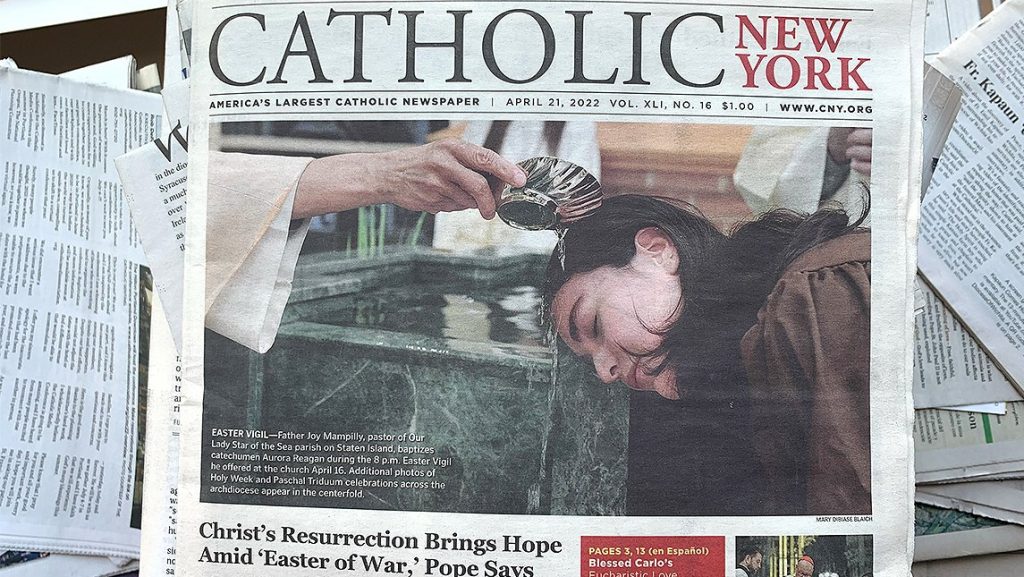I was reading the Los Angeles Times before I went to my first rock concert. Before my first PG movie, probably. I’ve been reading the Times for so long I can remember when it was conservative.
I would get the paper for my dad from the driveway every morning. Standing in bare feet on the concrete, I’d open it and scan the headlines before I brought it inside.
My addiction to news, in other words, is longstanding, and I’ve been this way for decades: reading, listening, watching, producing. Getting up with it in the morning. Inviting it into bed at night. But I have a confession to make. It is getting harder and harder to be a news junkie. That was why I was so fascinated by a similar confession from another journalist, Amanda Ripley, in a Washington Post column titled, “I stopped reading the news. Is the problem me — or the product?”
The problem is partly me. I have consumed ever larger quantities of news because it is so easy. The internet, podcasts, my phone — news is everywhere. “The news crept into every crevice of my life,” Ripley wrote. Ditto.
But part of the problem is the stories we are being told.
Ripley says we aren’t equipped to handle news, conflict, controversy, disasters 24/7. The nonstop coverage too often leaves us agitated and anxious, yet provides us with no hope, no way we can do something about whatever the disasters are we read about. Go through any normal newspaper (of which there are fewer and fewer) and count the anxiety-producing news stories and the anger-producing commentaries. They are overwhelming.
This is why, Ripley suggests, that an estimated 40% of Americans are avoiding the news. The news industry is in crisis. This crisis extends to Catholic media as well.
At the recent Catholic Media Conference in Portland, Oregon, Notre Dame professor Timothy O’Malley gave a keynote address on the future of Catholic journalism. “The Church is experiencing a crisis related to communications,” he said. This isn’t a matter of switching from newsprint to Facebook. Rather, it is a crisis of authority that is afflicting church, state, and press.
The worry of all this, to paraphrase G.K. Chesterton, is that to distrust all traditional authority and news media does not mean one believes in nothing. Rather, it becomes more likely one might believe anything. The vacuum left in distrust’s wake is filled with fake news and distorted news. We become both more suspicious and more credulous, as recent years have shown. This is dangerous for democracy, and it is dangerous for a Church that believes its very mission of evangelization hinges on both authority and trust.
In the world of Catholic journalism, many dioceses are replacing their papers with inspirational magazines or poorly trafficked websites. Local Catholic news is getting harder to find. (The Archdiocese of Los Angeles is a rarity in that it supports not only a magazine of news and culture, but also newsletters, a dynamic website, and active social media.)
In both the nation — where a quarter of all newspapers have folded since 2005 — and the Church, with a 40% drop, the decline of news media suggests a crisis of involvement and engagement with long-term implications.
Without using the phrase, both O’Malley and Ripley lean in the direction of something being proposed as “constructive” or “solutions journalism.”
It grows out of a concern that if all we journalists can do is describe how terrible the world is, we will continue to lose readers. We need to give people some hope, some means of responding.
For Ripley, hope is critical. “There is a way to communicate news — including very bad news — that leaves us better off as a result,” she wrote.
For O’Malley, too much of Catholic journalism has descended into “propaganda,” ideological clashes, or a kind of safe parochialism that neither offends nor interests. The answer is to engage the world, not run from it or wag a finger at it.
“The Church is not a culture meant to be turned in upon herself, but a culture intended to be leaven for every dimension of human life,” O’Malley said. “Our neighbors’ joys and sufferings are our joys and sufferings, no matter if they’re Catholic or not.”
If journalism, Catholic or otherwise, is not just to survive but thrive, we need to get beyond stoking outrage or playing it safe by not outraging anybody. What we need is to give people a sense of their own agency, that there is hope, and they can contribute.
At its best, Catholic journalism has always tried to tell its story with truth, not propaganda, with charity, not scapegoating. The question now is if this kind of journalism can still be produced, and if it will have the support of both its publishers and its readers.

